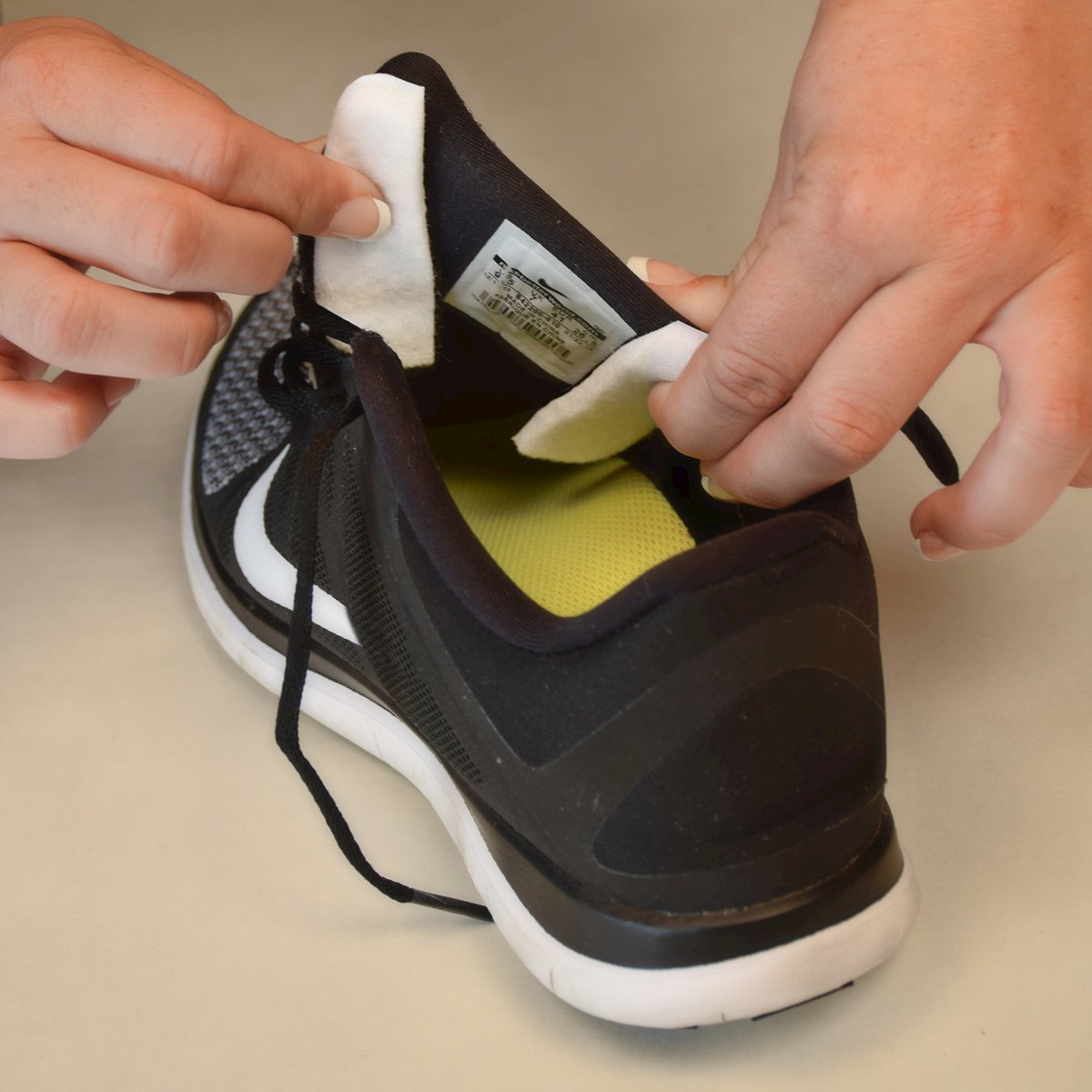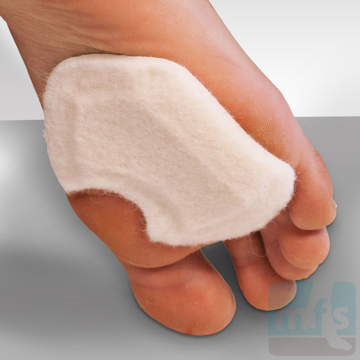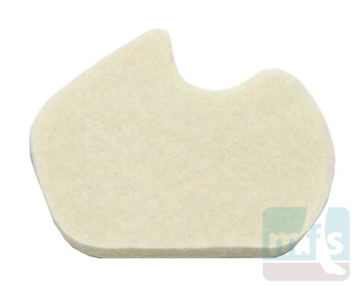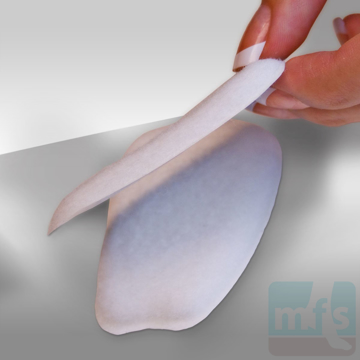You've invested in a great pair of shoes. The left foot fits like a glove but the right seems a bit loose and the heel slips. What can you do to make the shoe fit just right? The tool used by custom shoes stores is called a tongue pad.
Treating heel slip by optimizing the fit of the shoe
Tongue pads – the shoe fitter's secret weapon
You've invested in a great pair of shoes. The left shoe fits like a glove but the right seems a bit loose and the heel slips. What can you do to make the shoe fit just right? The tool used by custom shoe stores is called a tongue pad.
Tongue pads are named after the location where the pad is usually placed. The tongue pad is placed under the tongue of the shoe (that portion under the laces). Tongue pads are adhesive-backed. Depending on the fit, you may use one or more tongue pads to optimize shoe fit.
Heel slipping is a common problem with shoes. Heel slippage can easily be resolved with a tongue pad. Placing a single tongue pad under the tongue of the shoe pushes the foot back into the heel, reducing slippage.
Width differences may also be treated with tongue pads. Tongue pads may be placed adjacent to the tongue of the shoe to take up space in the shoe.
Haglund’s disease and saddle bone deformities may be treated with tongue pads. Simply split the tongue pad lengthwise and place in the shoe in a manner that will off-load the pressure points found in Haglund’s disease or with saddle bone deformities (as seen above). Tongue pads are really quite easy to use in these cases and very effective at reducing pain.
Tongue pads are inexpensive and easy to place. Now you know the shoe fitter's secret weapon – tongue pads.
Jeff
Medical Advisor
Myfootshop.com
Updated 3/18/2021















